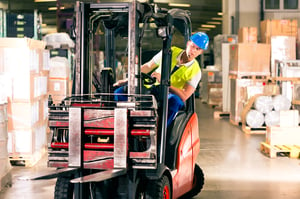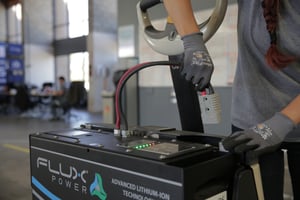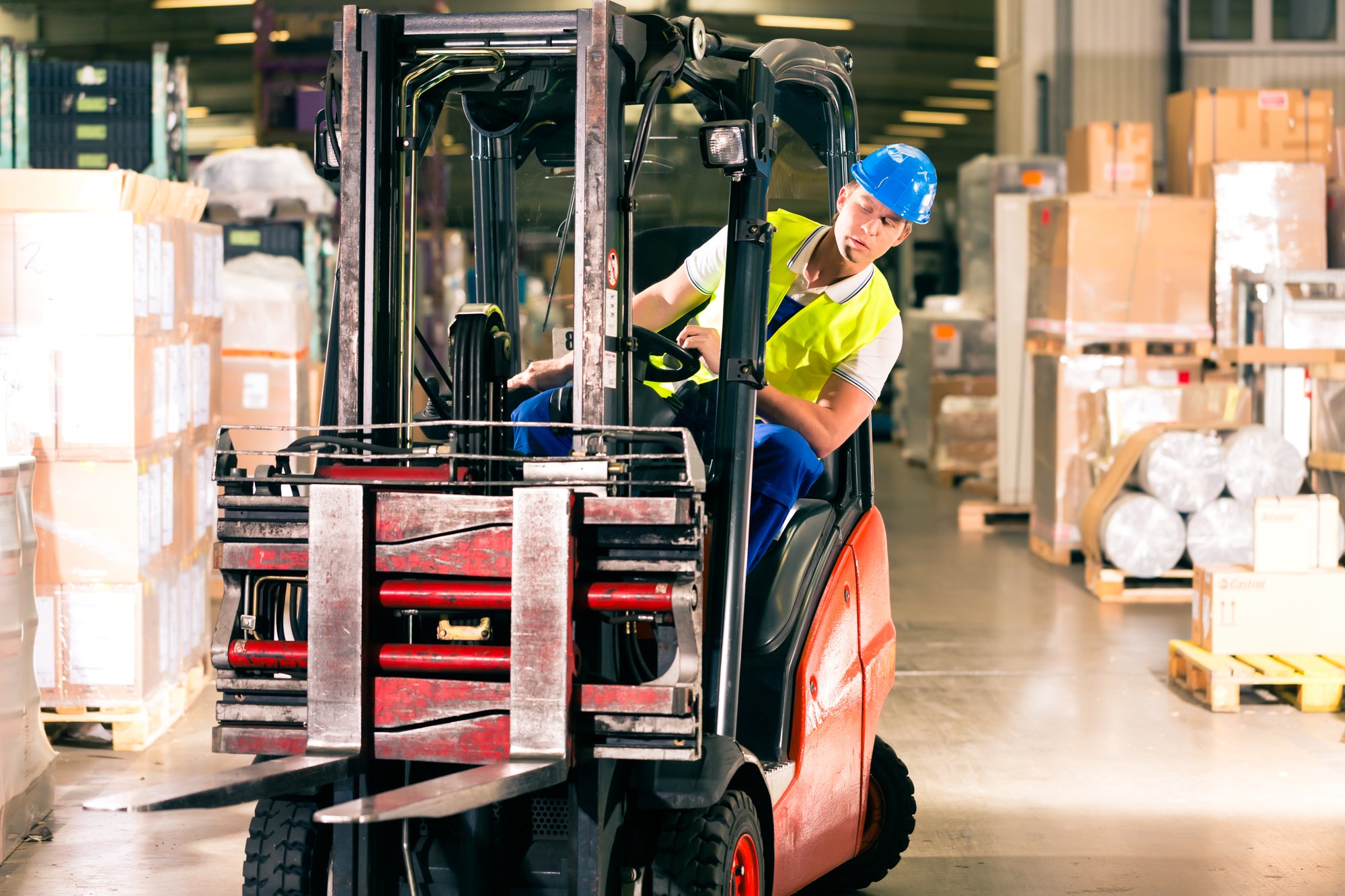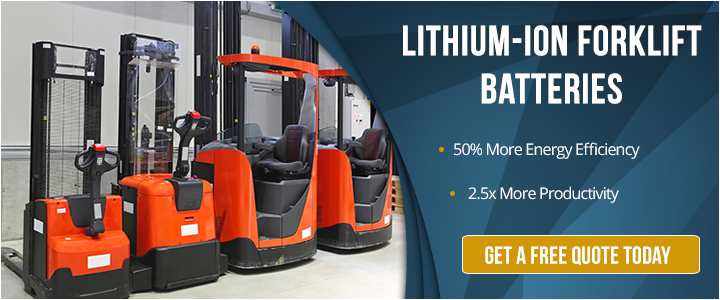In response to the COVID-19 crisis and shortages nationwide, some companies are ramping up production to quickly get products to market.
As part of this production increase, many companies are moving their operations from a single shift to multiple shifts to remedy these shortages. For companies that utilize forklifts and other material handling equipment, lithium-ion batteries are a great fit for a move to multi-shift operations without requiring the purchase of additional batteries.
In fact, companies that are ramping up their production can rely on lithium-ion batteries as an efficient and safe choice for their operations. Here’s why.
Longer Run Times
 Companies that are adding production time to their operations know that having a forklift battery that can be in service as long as possible is the key to maintaining productivity.
Companies that are adding production time to their operations know that having a forklift battery that can be in service as long as possible is the key to maintaining productivity.
Lithium-ion batteries, on average, run about 7.2 hours before requiring a charge. They can also be safely discharged down to 20% capacity.
A lead acid battery, on the other hand, typically requires charging after just 5.4 hours of use and can only be safely discharged down to about 30% capacity.
Swapping a battery after just over 5 hours of use can lead to costly downtime for employees. And during high production times, every minute counts.
Shorter Charging Times
Lithium-ion batteries can be fully charged in 1 to 2 hours. But an added benefit is that they can be opportunity charged for 15 or 30 minutes here or there without permanent damage to the cell’s capacity. This means that in between shifts or while employees are on break, lithium-ion batteries can be charged and immediately go back into service.
Lead acid batteries, in contrast, require 8 hours to charge and must also go through a cooldown period that takes them out of service for another 8 hours.
For multi-shift operations, lithium-ion batteries and lead acid batteries differ dramatically when it comes to their charging times, and therefore in-service availability. One lithium-ion battery can be in service throughout a 24-hour period. During that same period of time, three lead acid batteries would be needed.
Simpler Charging Process
 Companies ramping up their production to multiple shifts know that any type of downtime can be costly.
Companies ramping up their production to multiple shifts know that any type of downtime can be costly.
Utilizing a battery that includes a simpler charging process makes it easier for crews to quickly charge the battery and get it back into service.
Lithium-ion batteries do not require separate charging rooms and do not need to be removed from the lift equipment in order to be charged. Forklift operators simply drives to the charger and connects the battery to the charger while it is still in the forklift.
The charging process for a lead acid battery is much more complex and time-consuming. When a battery must be charged, a forklift operator must drive the forklift to a designated battery charging room.
Because the lead must be taken out of the forklift to charge, special lifting equipment must be used to remove the battery and place it on a storage rack where the charging will be done. As mentioned above, this charging process lasts approximately 8 hours.
Afterward, a cooling down stage takes another 8 hours. The battery will either remain where it was charged to cool down or personnel may transport it to a designated cooling area if the space is needed in the battery room to charge other batteries.
All combined, the charging process for a lead acid battery is much more complicated than that of a lithium-ion battery.
Minimal Maintenance
With production for some companies at an all-time high, there is little time for maintenance. The good news is that lithium-ion batteries require no regular maintenance.
That’s because unlike lead acid batteries, lithium-ion batteries do not need to be watered. This saves important time and manpower that is being used elsewhere in your operations to keep up with high production needs right now.
In lead acid batteries, water levels must be precisely controlled. Typically, the battery’s electrolyte levels are checked once a week and refilled with distilled or deionized water.
Workers must also monitor the battery to ensure:
- Water levels do not drop too low that the top of the lead plates is exposed (about every 10 charge cycles)
- Water used must be between 5 and 7 on the pH scale
- Enough space is left for the liquids inside to expand, which occurs when the battery is in use
- The cells are equalized regularly and temperature is controlled throughout the charging process
Failure to properly maintain the water level can lead to permanent degradation of the battery’s capacity.
Enhanced Safety
While productivity is important for any operation, ensuring employees are safe is critical … especially during extraordinarily busy times.
Lithium-ion batteries offer enhanced safety features to ensure that you are getting the most out of your battery while protecting employees at the same time.
Because lithium-ion batteries do not require watering, there is no possibility of a spill occurring. When using a lead acid battery, there is a risk that highly-toxic sulfuric acid can splash onto the body or in the eyes, causing serious injuries.
There is also minimal risk of overheating when using lithium-ion batteries because the battery management system (BMS) tracks cell temperatures to ensure they remain in safe operating ranges. In lead acid batteries, the electrolyte solution can overheat, increasing pressure inside the battery. This can damage the battery plates, or worse, cause an explosion.
Lastly, lithium-ion batteries do not emit potentially harmful gases when charging, unlike lead acid batteries. Because lead acid batteries can produce hydrogen gas while charging, especially if overcharged, they require separate, well-ventilated areas during this process.
A Great Fit For Temporary Solutions
Many companies are experiencing an increase in demand for their products and are responding by increasing their rate of production. Purchasing additional forklifts and batteries is an option, but managers should consider whether this demand may decrease or level off once the COVID-19 crisis abates.
However, there is another solution companies can consider to meet current, short-term demands: renting forklifts. Choosing a rental company that offers lithium-ion batteries as the power source for its forklifts will provide your company with the same benefits outlined above.
You can read more about the benefits of choosing lithium-ion in forklift rentals in our article, Lithium-ion Is The Better Choice To Power A Forklift Rental.
Lithium-ion batteries are a great fit for multi-shift operations, especially those that have experienced an increase in production in response to the COVID-19 pandemic.
Not only do lithium-ion batteries feature longer run times and shorter charging times when compared to lead acid batteries, they also have a simpler charging process, require minimal maintenance and are safer for employees.












